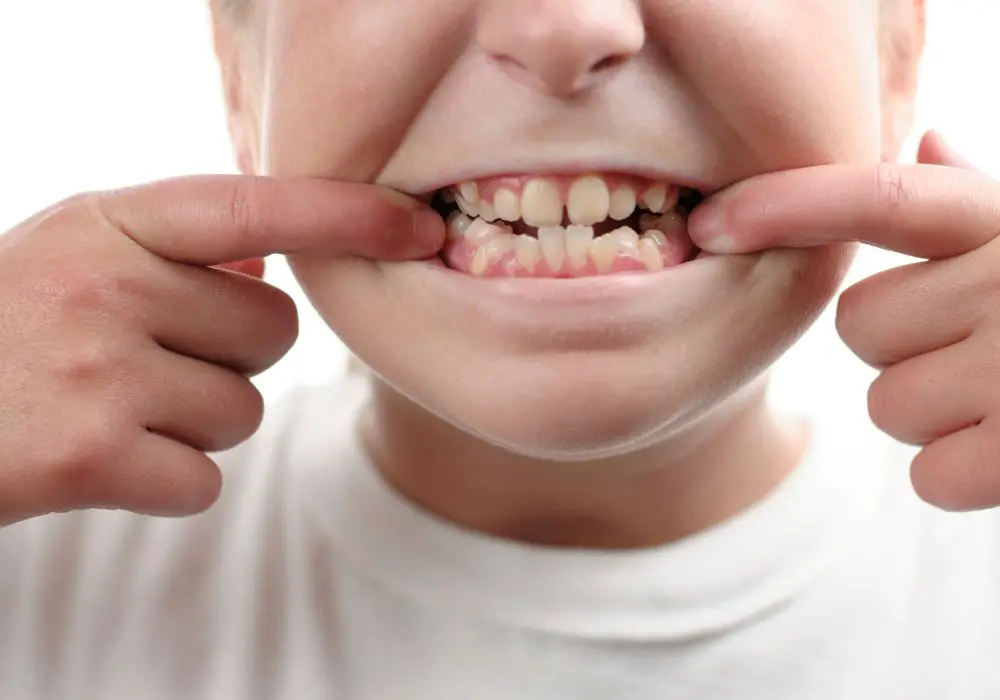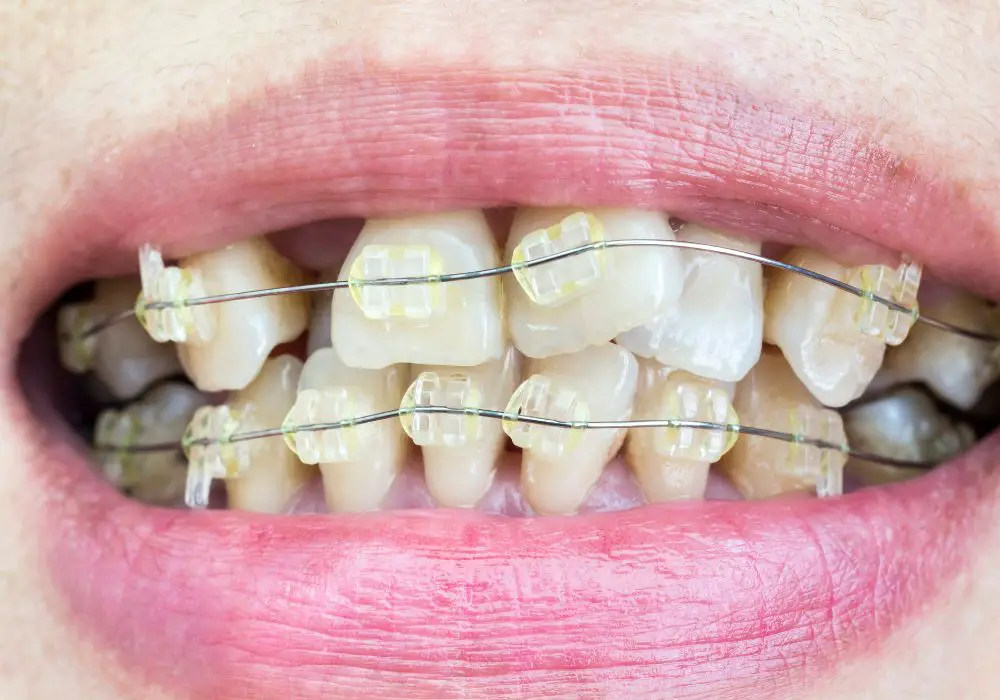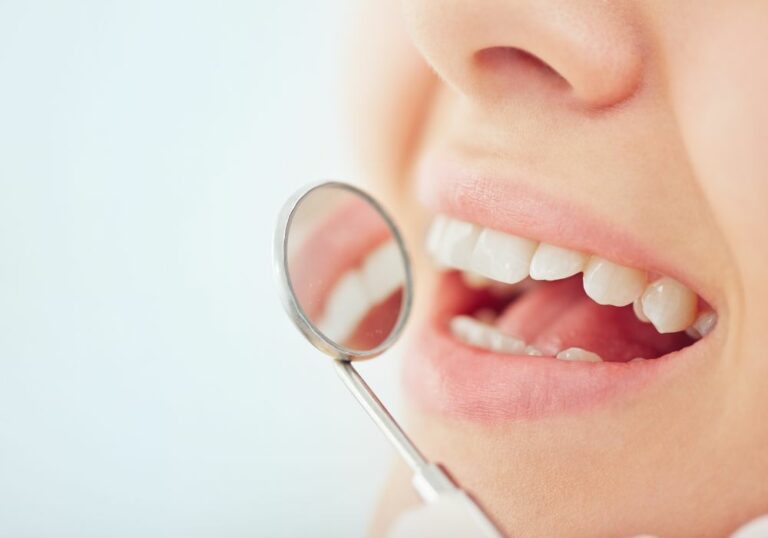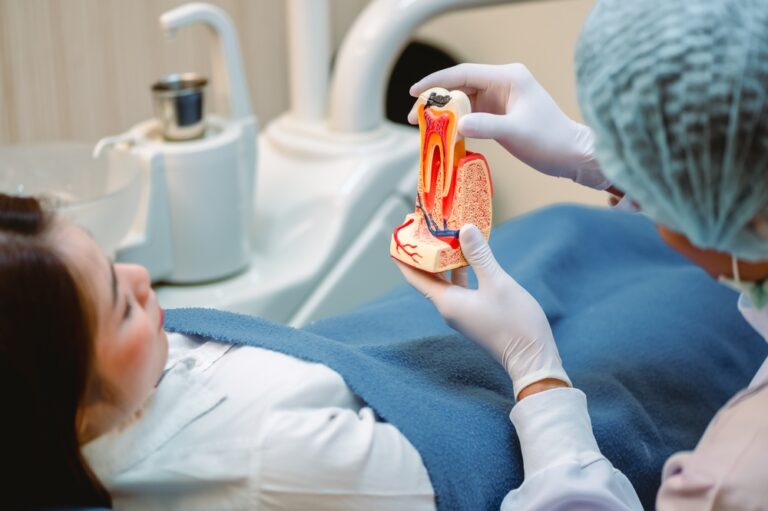Having a perfect smile with straight, well-aligned teeth is important to many people for appearance and oral health. But while some people develop perfect dental arches naturally, for others, teeth come in crooked and crowded.
Malocclusion, or misalignment and spacing of teeth, is very common, affecting around 60-75% of the population to some degree. The causes of crooked teeth range from genetics and oral disease to environmental factors.
So why is it that some people develop nicely aligned teeth, while others struggle with crowded, protruding, or crooked teeth? There are several reasons certain individuals are more prone to teeth misalignments and need orthodontic treatment to correct them:
Genetics

One of the main reasons some people have crooked teeth is genetics. The way our teeth fit together is determined by our DNA. Some people inherit irregularities in jaw size or tooth position that can lead to crowding or crooked teeth.
Jaw size
If you have a small jaw, there may not be enough room for all your teeth. Extra teeth have to twist into the available space, resulting in overlapping, crooked teeth. Having a jaw that is too small can be caused by underdevelopment of the bones of the jaw or by having teeth that are too large.
Some people have jaws that are simply too short from front to back, so the front teeth crowd and push back into the back teeth. Others may have a jaw that is too narrow, so the teeth get squeezed and shifted out of place.
Similarly, having an extra-large jaw can also cause teeth spacing problems. The jaw may be so wide there is not enough space for the teeth to line up properly. Teeth can flare outwards and remain unopposed. This excessive width is often due to inheriting oversized jaw bones.
Jaw size and tooth positions are polygenic traits, meaning variations are caused by multiple genes. At least 20 different gene regions have been associated with jaw and dental crowding. The particular combination of gene variants you inherit from your parents determines if your teeth will be straight or not.
Tooth position
Genetics also controls the position of tooth buds – these are the beginnings of teeth within the jaw. If tooth buds are positioned incorrectly, developing teeth may erupt out at an angle or get pushed out of alignment.
Tooth buds go through complex signaling and patterning steps as embryos. If disruptions occur, permanent teeth can end up misaligned right from the start. For example, mutations in certain homeobox genes alter tooth bud position resulting in crooked teeth.
Again, many genes influence tooth position. Inherited dental irregularities can affect baby teeth as well as permanent teeth. Even if baby teeth come in relatively straight, problems with permanent teeth may not become apparent until adolescence.
Inherited dental problems
Some hereditary conditions directly impact tooth alignment:
- Cleft lip and palate – A split in the lip and roof of the mouth causes teeth misalignment. The cleft affects facial development and the position of the jawbones. This pushes teeth out of their normal arch.
- Ectodermal dysplasia – People with this condition have missing teeth and abnormal tooth shape. The disorder interferes with proper development of tooth buds and enamel.
- Supernumerary teeth – Extra teeth can overcrowd the jaw. Multiple inherited and genetic factors cause extra teeth to form during the bud stage of development. Supernumerary teeth often come in crooked due to insufficient space.
Childhood habits
Habits and behaviors during childhood also determine if teeth grow in straight. Sucking habits, tongue thrusting, and mouth breathing can all contribute to crooked teeth.
Thumb sucking
Infants are born with a instinct to suck. Thumb sucking and using pacifiers are normal at first. But if the habits persist beyond age 4, they may affect tooth alignment and facial growth.
Long term, vigorous sucking applies uneven pressure on the teeth. It can push teeth forward and flare them out in the front. Often the upper front teeth tip outward while the lower front teeth get pressed inward. This narrows the jaw which further crowds developing teeth.
Sucking can also cause bite alignment problems. It may open the bite and push the lower jaw backward. This can make the upper teeth jut out over the lower teeth, known as an overjet.
Thumb sucking is one of the top reasons for crooked teeth and narrowed jaw arches in children. However, effects depend on frequency, intensity, and duration. Children who rest just the tip of the thumb in the mouth are less likely to have damage than vigorous sucking.
Tongue thrusting
Some children unconsciously push their tongues against or between the teeth when swallowing. This repetitive pressure on the teeth gradually forces them out of position over months and years.
Tongue thrusting often occurs in conjunction with an open bite. The tongue pushes the front teeth forward, flaring the upper incisors outward. Meanwhile the lower incisors get pushed inward, creating a gap between top and bottom front teeth.
This habitual swallowing pattern develops in early childhood, by age 5 or 6, but may continue for years until accidentally corrected or when permanent teeth erupt. The longer it persists, the more severe the malocclusion becomes. Tongue thrusting is difficult to detect and intervention requires special training exercises.
Mouth breathing
Breathing predominantly through the mouth instead of the nose can reshape facial bones and dental arches over time.
When children are habitual mouth breathers, the tongue rests in a lower position away from the palate instead of the roof of the mouth. This disrupts normal forces on growing teeth and leads to crookedness and misalignment.
The upper jaw may also narrow due to lack of proper tongue support, worsening crowding. Chronic low tongue posture encourages overeruption of teeth, flaring them outward.
Common causes of chronic mouth breathing include adenoid/tonsil hypertrophy, allergies, nasal obstruction, and obstructive sleep apnea. Early orthodontic treatment combined with otolaryngology care may help lessen the effects on tooth position.
Childhood dental trauma

Injuries to primary (baby) teeth can damage permanent tooth buds lying below. Dental trauma occurs most often between ages 2-4 when kids are prone to falls and accidents.
Baby tooth injuries
When baby teeth are knocked out or displaced due to injury, it can push developing permanent teeth into abnormal positions. The trauma disrupts the bone housing the permanent tooth buds.
Unless corrected, permanent teeth may erupt in odd directions – sideways or overcrowded. Left untreated, childhood dental injuries frequently lead to serious malocclusion.
Common causes of baby tooth trauma include falls, collisions during play, and sports accidents. Mouth guards help protect children’s teeth from sports impacts. Prompt dental treatment of baby teeth injuries can often minimize effects on unerupted permanent teeth.
Broken or fractured jaw
If a child breaks or fractures their jaw, it affects the whole lower facial structure. Jaw fractures alter the alignment of tooth sockets and the underlying bone that permanent teeth grow into.
After a fracture, the jaw bones may heal slightly shortened or positioned backward. Permanent teeth then emerge according to the new abnormal position of bone.
Jaw fractures require prompt medical attention. After fracture reduction and stabilization, orthodontic treatment is usually needed later to realign developing teeth within the repaired jawbone.
Missing teeth
When permanent teeth fail to develop or are lost prematurely, surrounding teeth may shift into the empty space. This can throw off dental alignment.
Congenitally missing teeth
Some people are born without certain teeth, known as congenitally missing teeth. It is the most common dental developmental disorder. The genetic condition runs in families.
Third molars are most frequently missing, followed by second premolars and upper lateral incisors. The dental gap allows neighboring teeth to drift and rotate into the opening over time. Spaces between teeth increase and throw off alignment.
Based on the location, orthodontics or dental implants may be needed to close missing tooth gaps. Otherwise, teeth gradually shift until they collapse inward and cause problems.
Tooth loss
Knocked out or extracted permanent teeth also leave gaps in the dental arch. Adjacent teeth naturally tilt and drift toward any open spaces. This sideways movement crowds other nearby teeth, potentially causing tooth misalignment.
In children, early loss of primary molars frequently pushes permanent teeth out of line. As permanent successors erupt, they shift into the empty space left by the missing primary molar.
Replacing the space with a partial denture or spacer appliance can guide proper eruption of incoming teeth and prevent crowding.
Malocclusion causes
Malocclusion is the medical term for misaligned teeth and incorrect bite patterns. Besides genetics and behavior, malocclusion has other possible causes:
- Mouth/jaw tumors – Benign or malignant growths disrupt normal jaw development. Teeth shift due to asymmetrical or disproportionate jaw expansion.
- Oral habits – Besides thumb sucking, nail biting, pen chewing, and bruxism (tooth grinding) can slowly shift teeth over time.
- Tongue/lip ties – Restricted tongue or lip movement puts uneven pressures on certain teeth, pushing them out of place.
- Mouth breathing – Chronic open-mouth posture alters growth as detailed earlier.
- Missing/extra teeth – As described above, missing or supernumerary teeth affect alignment.
- Illnesses – Diseases like rickets, syphilis, cleidocranial dysplasia, Down syndrome, and cleft palate influence dental growth.
- Endocrine disorders – Growth hormone deficiencies or excesses disrupt development. Both speed up or delay facial bone maturation.
- Poor nutrition – Nutritional disorders, like vitamin D deficiency, alter bone and jaw maturation, growth of tooth buds, and the timing of tooth eruption.
Impact of crooked teeth
Having teeth come in crooked can negatively affect both oral health and self-esteem:
- Periodontal disease – Crooked teeth with crowding are harder to keep clean. Plaque and tartar buildup raises periodontal disease risk.
- Tooth decay – Misaligned teeth also have more pits, grooves, and overlapping areas that can trap bacteria and food debris. This accelerates tooth decay.
- Chewing difficulties – Irregular bite patterns make chewing less efficient. Positioned abnormally, certain teeth cannot grind and shear as designed. Crooked teeth may also cause tooth abrasion.
- TMJ/TMD disorders – Jaw pain, popping, and TMJ dysfunction are common with poor tooth alignment. Misaligned bite strains the temporomandibular joints.
- Speech impairment – Difficulty pronouncing certain words or sounds clearly. Crooked teeth interfere with proper tongue contact with teeth required in speech.
- Low self-confidence – Crooked teeth often detract from smile appearance and self-image. Teens may be self-conscious about braces. Surveys show crooked teeth lower self-esteem.
- Social and job limitations – Tooth and bite alignment problems can interfere with normal social interactions. Crooked teeth may also limit some career options depending on appearance demands.
Orthodontic treatment

Orthodontic treatment is often needed to straighten teeth and correct bite alignment. Contemporary options include:
Braces
Metal or ceramic brackets are bonded to each tooth and connected with an archwire. The continuous archwire applies light pressure to shift teeth into better positions. Braces utilize controlled, measured force to move teeth predictably week by week.
Newer orthodontic materials and 3D imaging allow more tailored braces treatment with reduced duration. Clear ceramic braces are less visible. Lingual braces attached to the tongue-side of teeth hide the appliance.
Clear aligners
Custom clear plastic aligners are worn sequentially to incrementally move teeth. Each new set of aligners slowly repositions teeth toward the desired arrangement. Brands like Invisalign and ClearCorrect offer clear aligner therapy.
Aligners are removable for eating and cleaning. However, treatment success depends on patients wearing aligners consistently for 22 hours per day. Otherwise, teeth will revert to original positions.
Headgear or facemask
Orthodontic headgear or a facemask appliance attached to braces can guide and modify the growth of the jaws. These appliances also help influence tooth positions. Used in growing preteens to create more space for crowded teeth.
Headgear with braces maximizes growth potential of the jaws, allowing teeth to align properly without removing any. Facemasks bring the upper jaw forward which makes more room for front teeth.
Retainers
After braces, a retainer keeps teeth from relapsing into crooked positions. Retainers are worn full-time at first, then nightly as needed longterm. Types include fixed and removable retainers.
Fixed retainers are wires bonded behind the front teeth. Removable retainers are plastic trays worn at night. Retainers prevent teeth moving due to natural pressures of the lips, cheeks and tongue.
Starting age for orthodontic treatment ranges from age 7-14 depending on severity and growth stage. Early intervention for crowding may avoid extraction of permanent teeth to create space.
Maintaining oral health
With or without orthodontics, good oral hygiene is essential for healthy teeth and gums:
- Brush teeth twice a day with fluoride toothpaste
- Clean between teeth daily with floss or interdental brushes to remove plaque
- Visit dentist regularly every 6 months for exams and professional cleanings
- Avoid constant snacking and sipping sugary or acidic beverages which increases decay risk
- Wear a mouthguard when playing sports to protect teeth from trauma
- Stop habits like thumb sucking or pacifier use by age 4 to allow normal jaw development
Proper home care keeps teeth and braces clean during orthodontic treatment. Always follow the orthodontist’s instructions to avoid damaging appliances or prolonging treatment.
Frequently Asked Questions
What age is best to get braces?
The ideal age for braces is between 10-14 years when a child has a mix of baby and permanent teeth. Starting earlier takes advantage of jaw growth potential before puberty slows the process. However, adults of any age can benefit from orthodontic treatment.
Can thumbsucking permanently damage teeth?
If prolonged beyond age 4, vigorous thumbsucking or pacifier use can cause crooked, protruding front teeth. Weaning off the habit by age 4 allows normal straightening as permanent teeth erupt. Brief, light sucking without jaw or tooth deformity, causes minimal effects.
Is extraction sometimes necessary for braces?
Extracting teeth may be required to free up space needed to align extremely crowded teeth properly with braces. The orthodontist will evaluate if any premolars or other teeth should be removed. Extractions are usually the last resort if other methods are inadequate.
Can missing teeth be replaced with implants after braces?
Yes, after braces and teeth are aligned, dental implants can effectively replace congenitally missing teeth or teeth lost due to injury or decay. Implants help maintain spacing and prevent remaining teeth from shifting into gaps.
How long after getting braces off do you need to wear a retainer?
Retainers are required full-time for 6-12 months after braces. Then nightly wear for at least 2-3 years is recommended to prevent teeth moving back out of position. Regular retainer use may be lifelong, especially with fixed retainers. Removing retainers too soon leads to relapse.
Conclusion
In summary, genetics play a major role in why some people have crooked teeth, but childhood behaviors and dental problems also affect alignment. Modern orthodontic treatments using braces, aligners, or other appliances can successfully straighten teeth at any age. Maintaining good oral hygiene and stopping harmful oral habits early helps prevent and reduce crooked teeth.







